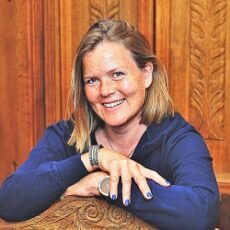How can we best use data and facts to support our place branding and location promotion? Intriguing insights and advice from our combined panel of place brand and sustainable tourism experts. Below their answers (alphabetically – highlighted respondents are available for consulting or as speakers).
Our key takeaways:
- Data and facts help branding to be authentic and not sugarcoated;
- Tourism data are valuable. They help destinations identify key source markets and allocate budget to attract the right kind of visitors;
- Data are especially useful for destination management, such as to avoid overcrowding;
- Data bring transparency to destination marketing activities and helps assess their effectiveness.

Brian Mullis
USA | This is a very broad question. As such, I’ve opted to include one bit of advice: ongoing data analysis enables destinations to identify and prioritise the most important prospective source markets. This process takes into account many weighted variables and results in:
- the development of a portfolio of market segments to target within the primary source markets that were identified, and
- the levels of investment recommended to optimize the return on the marketing and sales investment.
Fiona Jeffery
UK | Some mobile data has been used very effectively to identify locations potentially suffering from overcrowding and thus can be used to help disperse or identify alternative destinations to experience, avoiding or mitigating the risks of overcrowding.
Günter Soydanbay
Canada | The answer is rooted in the art of persuasion. For instance, if you want to activate social proof, you can say something like “Turkey is the number six tourist destination in the world.”
Arguments like “most popular, best selling, preferred by 80% of visitors, etc.” are all claims that trigger our innate tendency to emulate the behaviour of those around us. Likewise, you can use facts to create a sense of scarcity. If a destination has a certain quota for its visitors, it will be perceived as more attractive.
 Jonathon Day
Jonathon Day
USA | It is time that destination marketers became more transparent about the effectiveness of their branding efforts. Too often brand success is determined by general awareness of the destination. This measures brand image (which may or may not have been influenced by the brand marketing/promotion) but not the impact on the brand goals.

Kirsi Hyvaerinen
Montenegro | My advice: link data with concrete benefits, use gamification and data-driven nudging.
Natasha Grand
UK | Data works best when interpreted through human experience. As in not “the city has 10K trees,” but “there is a tree every 2 meters”.
Robert Govers
Belgium | Use data and facts “creatively” for fake news? The only long-term guarantee for creating a strong brand is to be genuine, authentic, and consistent.
Todd Babiak
Australia | The research should build a position or story for the place, which makes it much easier to be creative in a way that builds and reinforces the overall strategy. Creativity for creativity’s sake can be a waste of time and money.
We can all be successfully creative when we have constraints: we understand and express our culture, we know our audiences, and we engage powerfully with them.
Tom Buncle
UK | Substance (facts) must inform the development of a brand. A brand is no substitute for substance; it must be built on substance or it will fail. Once a brand truth is established, promotion is straightforward.
Vicky Smith
UK | People do seem to like infographics still!
Andrea Lucarelli
Sweden | Well for sustainability, for example, one could frame an advocacy campaign using numbers to show that different practices pollute. Think of the ads for cigarettes or other social marketing examples as nudging.
Gianna Moscardo
Australia | If we focus on data and facts about a destination’s sustainability performance then stories are much better than data and facts. Leave the data and facts for sustainability reports, and for branding and promotion to tell stories.
Stories of tourism businesses being more sustainable and stories of how tourists are contributing to more sustainable outcomes for the destination.
Malcolm Allan
UK | I recognised the power of accurate data and truth-full facts many years ago to address misconceptions about places, by their stakeholders, their residents and businesses and people interested in visiting, investing in or locating in the place.
One of the most creative ways of using data is to challenge these misconceptions, in particular, to replace negative or wrong perceptions with positive perceptions, avoiding the temptation to say that the data shows they are wrong.
Another creative way is to use data and facts to substantiate the potential for future development of the place, whether by trend analysis or by quantitative or qualitative surveys.
And knowing how to analyse data to identify significant changes or blips in trends, both positive and negative, is key to understanding how accurate data can present a realistic picture of the place and how it is performing as a tourist destination for visitors (meeting their needs and preferences) and as a place for tourism businesses to locate in and invest in – using data on actual spend and potential spend.
Digitally derived data, what I term ‘digital demand’ such as analyses of online searches on the place and demand online for its offers can be used to inform investment in tourism facilities. For example, new facilities that tourists would like to see in the place and to indicate the potential for expansion of provision, facilities, services and attractions.
In addition, data and facts about the existing offer, what I term ‘digital supply’, can help to substantiate the nature and level of attraction that the place and its offers have for existing market audiences and can also be used to attract new and additional investment in the place, in the expansion of existing offers and investments in new and complementary offers.
Rachel Dodds
Canada | All decisions should be made using data. Data-based decision-making is key for branding and promotion. For example, if you use the data to determine your source markets, they can help your marketing by being targeted. Understanding who comes, from where and what your issues are – helps with better communication and promotion in general.
Richard Butler
UK | Be honest, reflect reality, and don’t create false images or promotions.
Steve Noakes
Australia | Making data sexy for branding and promotion is not easy. It is best to keep it in the ‘back room’ and let the creative marketing people put together the promotional messages that hit the individual target markets. On the other hand, interesting facts about people, places, biodiversity, history, etc., can make good promotional content.
Previous questions answered by the panel here.
Enjoyed this snapshot of expert views on how to use data to support destination branding and -promotion? Thanks for sharing!








